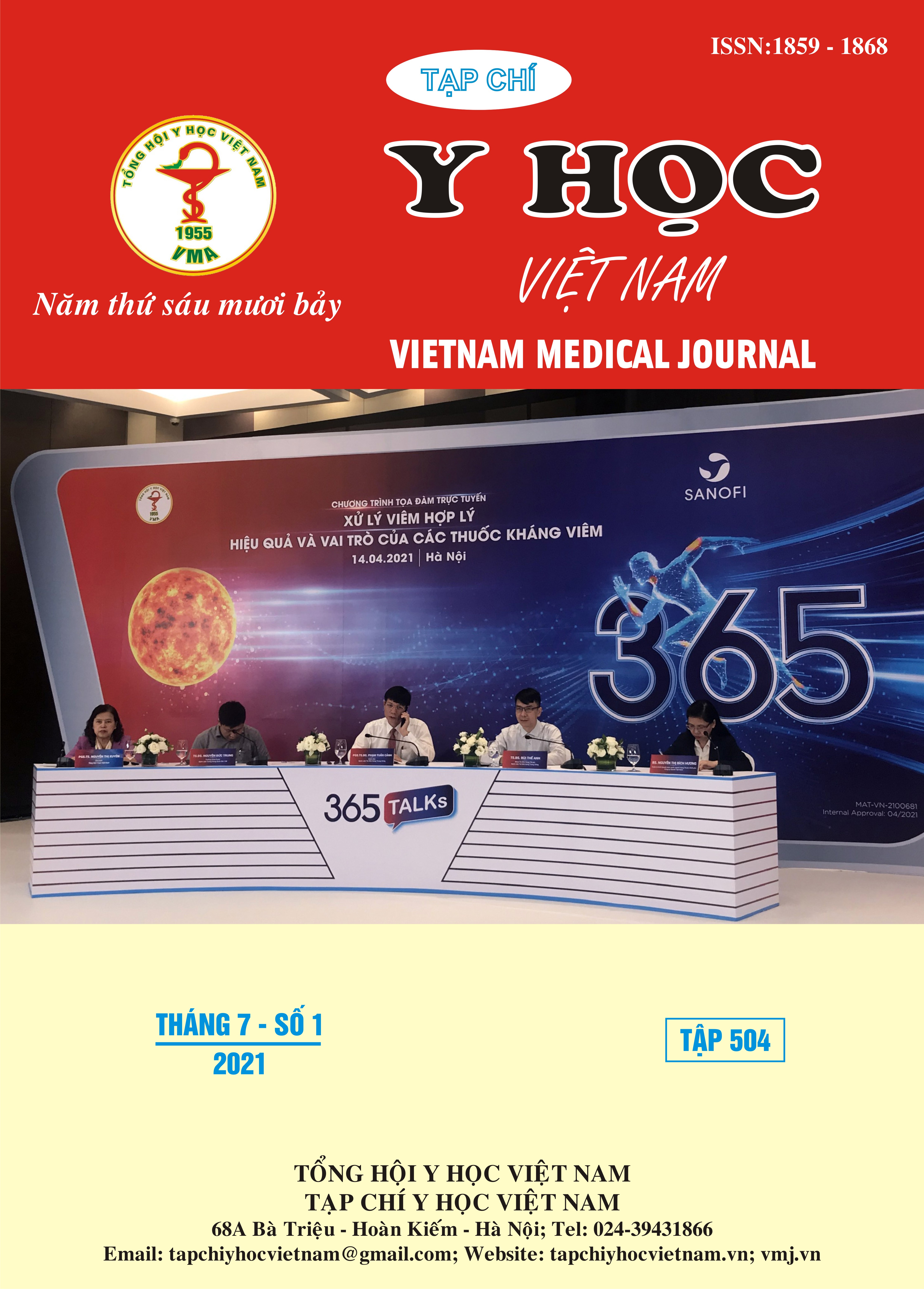ĐÁNH GIÁ KẾT QUẢ PHỤC HỒI KHẢ NĂNG ĐI TRÊN BỆNH NHÂN LIỆT NỬA NGƯỜI DO NHỒI MÁU NÃO
Nội dung chính của bài viết
Tóm tắt
Đột quỵ não gây ra nhiều khiếm khuyết, là thách thức không nhỏ cho các nhà thực hành lâm sàng chuyên ngành Phục hồi chức năng. Trong đó chức năng đi là vô cùng quan trọng để bệnh nhân (BN) có thể tham gia vào các hoạt động sinh hoạt, lao động và hội nhập. Mục tiêu: đánh giá kết quả phục hồi khả năng đi trên bệnh nhân liệt nửa người do nhồi máu não. Đối tượng và phương pháp nghiên cứu: Gồm 31 bệnh nhân được chẩn đoán liệt nửa người do nhồi máu não lần đầu tiên được điều trị tại Bệnh viện Phục hồi chức năng Hà Nội từ ngày 01/08/2020 đến ngày 30/05/2021. BN được tập luyện phục hồi chức năng (PHCN) tập trung vào các bài tập tăng khả năng đi trong thời gian 1 tháng tại bệnh viện. Đánh giá sau 2 tuần, 1 tháng khả năng dồn trọng lượng bên liệt, vận tốc đi, nhịp bước đi, chiều dài sải chân, thang điểm khả năng đi FAC và thang điểm Tinetti. Kết quả: Độ tuổi hay gặp là ≥ 60 chiếm 80,6%, tuổi trung bình 63,6 ± 9,8. Tỉ lệ nam/nữ là 1,38. Tỉ lệ BN liệt nửa người bên phải là 74,2% và bên trái là 25,8%. Thời gian đột quỵ trong nhóm nghiên cứu hay gặp là ≤ 12 tuần chiếm 93,5%. Sau 1 tháng, khả năng dồn trọng lượng chân liệt, thông số nhịp bước đi, chiều dài sải chân và vận tốc đi cải thiện. Khả năng đi FAC độc lập là 51,6% và điểm Tinetti cũng tăng đáng kể. Kết luận: Phục hồi chức năng khả năng đi cho bệnh nhân liệt nửa người do nhồi máu não mang lại hiệu quả cải thiện đáng kể, giúp bệnh nhân đi lại tốt hơn.
Chi tiết bài viết
Từ khóa
Phục hồi khả năng đi, nhồi máu não
Tài liệu tham khảo
2. Nguyễn Thị Ngọc Lan, Nguyễn Thị Kim Thủy (2011). Đánh giá kết quả phục hồi chức năng vận động của bệnh nhân nhồi máu não cấp bằng kỹ thuật Bobath. Y học thực hành, (12), 100–103.
3. Phạm Thị Minh Nguyệt, Trần Văn Chương (2008), Đánh giá kết quả phục hồi chức năng đi lại và mối liên quan với cơ lực chi dưới ở bệnh nhân tai biến nhồi máu não vùng bán cầu, Luận văn thạc sĩ y khoa, Trường Đại học Y Hà Nội.
4. Bộ Y Tế (2014), Hướng dẫn quy trình kĩ thuật chuyên ngành phục hồi chức năng, 87 - 89
5. Van Criekinge T., Hallemans A., Herssens N. và CS (2020). SWEAT2 Study: Effectiveness of Trunk Training on Gait and Trunk Kinematics After Stroke: A Randomized Controlled Trial. Physical Therapy, 100(9), 1568–1581.
6. Jerome G.J., Ko S., Kauffman D. và CS (2015). Gait Characteristics Associated with Walking Speed Decline in Older Adults: Results from the Baltimore Longitudinal Study of Aging. Arch Gerontol Geriatr, 60(2), 239–243.
7. Phạm Thị Hải Yến (2002), Nghiên cứu một số thay đổi về dáng đi trên bệnh nhân liệt nửa người sau tai biến mạch máu não vùng bán cầu, Luận văn bác sĩ nội trú, Trường Đại học Y Hà Nội.


